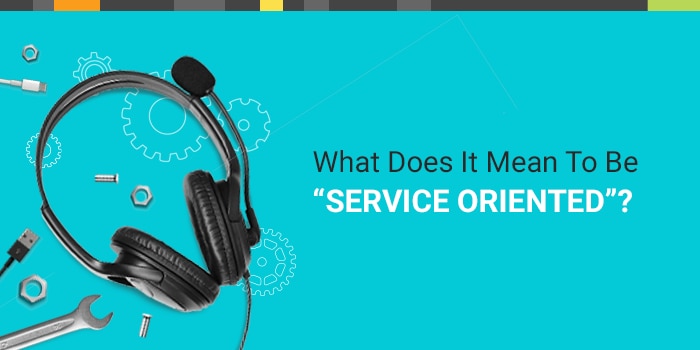What Does It Mean To Be “Service Oriented”?
One of the biggest challenges facing contemporary IT leaders is finding the requisite time to be an innovative partner to the entire organization while continually fighting fires. At an overwhelming majority of organizations, the budget reflects the reality of IT operations and not the aspirations embodied by service-oriented IT initiatives. The IT budgets of many organizations are often devoted to keeping systems and processes up and running, delivering service, and putting out fires. According to a recent study from IDG, just 33% of IT leaders prioritize innovating business initiatives.The Case for Service-Oriented IT
Agile IT, DevOps, and IT’s position as a business leader in digital transformation have played a role in shifting IT’s goals toward innovation and strategy. Of course, day-to-day maintenance is still important, but today, service delivery also includes a strategic component. As employee-focused service management continues to influence service design in ITSM, organizations need to find more strategic ways to meet employees where they work and enable their success. That means not only replacing their laptop battery charger in a timely manner, but rolling out technology changes with maximum convenience and simplifying complex workflows to avoid delay and disruption.How IT Service Desks Can Ensure They Are Service-Oriented
It is one thing to ask what it means to be service-oriented, and another to come up with a plan to implement a more service-oriented framework. If your organization is working on aligning with ITIL 4 best practices, or has done the work to embrace the DevOps and Agile ITSM mindset, then a good portion of the foundation for a more service-oriented approach has already been laid. Thankfully, there are additional ways to foster a more service-based culture in a concrete fashion.Start with Employees in Mind
It can be entirely too tempting, especially when the numbers are compelling, to rely heavily on machine resource utilization metrics to establish your baseline of service and to evaluate your efforts to deliver that service. Shifting some of your measurement and analysis to people or user-oriented metrics like time to first response, customer satisfaction (CSAT) can help ensure you are not just closing tickets but meeting the expectations of your internal customers. Here's a quick guide to some of the top ITSM ITIL service desk metrics you should be measuring.Drive Greater Efficiency and Transparency
Modern IT service desks that incorporate smart technology like artificial intelligence and automations can help IT teams facilitate more efficient service delivery. Using AI to recommend categories and subcategories to requesters that can then power automations that route tickets to the right place can cut down on time spent going back and forth, which can help speed up resolution times. IT team members can spend more time providing services or working on strategic initiatives. Developing service level agreements (SLAs) can provide greater transparency for employees submitting a ticket or request, so they know upfront how long to expect their request will take. Setting clear expectations and delivering on those expectations is key to providing a service-oriented IT service desk experience. Using the metrics mentioned above, especially CSAT, can help your team understand if those expectations are being met, and if not, identify areas for improvement.The Service-Oriented Approach
So... what does it mean to be service-oriented? It means giving IT operations the resources needed to deliver exceptional services that drive a better employee experience and better business outcomes. ITSM inevitably includes some fire fighting, but with an employee service management strategy that drives innovation and collaboration, service-oriented IT is definitely possible.




